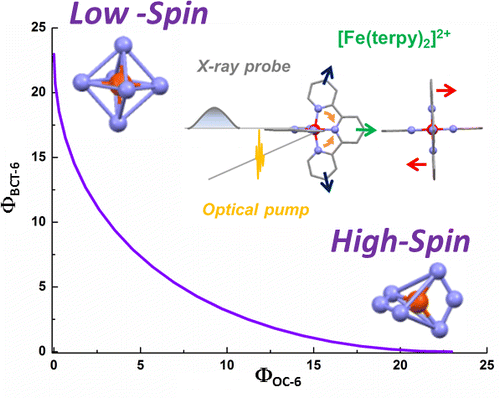-
Mapping the Ultrafast Changes of Continuous Shape Measures in Photoexcited Spin Crossover Complexes without Long-Range Order
S.E. Canton, X. Zhang, L.M. Lawson Daku, Y. Liu, J. Zhang and S. Alvarez
The Journal of Physical Chemistry C, 119 (6) (2015), p3322-3330


DOI:10.1021/jp5117189 | unige:46831 | Abstract | Article HTML | Article PDF

Establishing a tractable yet complete reaction coordinate for the spin-state interconversion in d4–d7 transition metal complexes is an integral aspect of controlling the dynamics that govern their functionality. For spin crossover phenomena, the limitations of a single-mode approximation that solely accounts for an isotropic increase in the metal–ligand bond length have long been recognized for all but the simple octahedral monodentate FeII compounds. However, identifying the coupled deformations that also impact on the unimolecular rate constants remains experimentally and theoretically challenging, especially for samples that do not display long-range order or when crystallization profoundly alters the dynamics. Owing to the rapid progress in ultrafast X-ray absorption spectroscopy (XAS), it is now possible to obtain transient structural information in any physical phase with unprecedented details. Using picosecond XAS and DFT modeling, the structure adopted by the photoinduced high-spin state of solvated [Fe(terpy)2]2+ (terpy: 2,2′:6′,2″-terpyridine) has been recently established. Based on these results, the methodology of the continuous shape measure is applied to classify and quantify the short-lived distortion of the first coordination shell. The reaction coordinate of the spin-state interconversion is clearly identified as a double axial bending. This finding sets a benchmark for gauging the influence of first-sphere and second-sphere interactions in the family of FeII complexes that incorporate terpy derivatives. Some implications for the optimization of related photoactive FeII complexes are also outlined.
